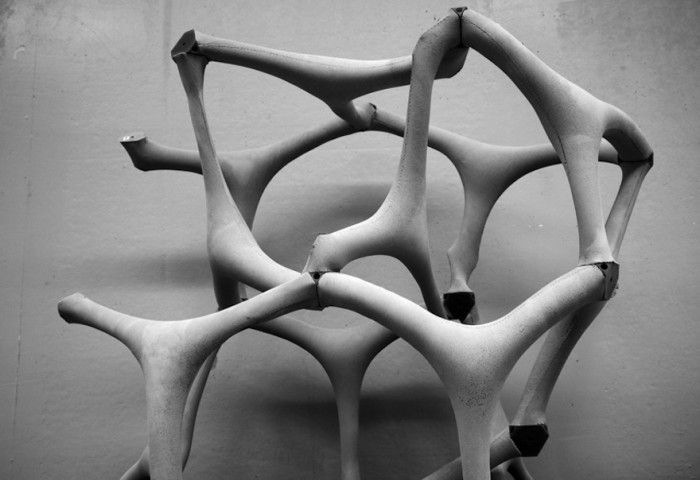
While MIT researchers are busy looking for a new formula to create a more sustainable form of concrete, Ron Cluver and Joseph Sarafian have come up with Fabric Forms, a new way of shaping the widely-used manmade material. Using lycra casings and robotic technology, the designers have invented a method to create dynamic concrete, which could lead to new forms and shapes in the world of architecture.
To make the concrete shapes, a concrete and fibreglass solution is poured into lycra sleeves, which are then pulled and manipulated into a desired shape by robotic arms. When the concrete hardens, the lycra is peeled away to reveal the form inside. This moves away from the traditional, more laborious method of casting concrete, which involves making single-use, unique moulds to produce a desired shape.
With the Fabric Forms shaping method, a concrete form can be made into any shape using the flexible lycra and set within 45 minutes. The designers use special software to reprogram the movements of the robotic arms so that each concrete form can be customised to become part of a larger structure.
The versatility of the technique could change the way concrete is used in architecture. Sarafian sees the method opening doors in the world of parametric design, a form of design that involves using algorithms to generate geometric design forms:
“Parametric design is increasing the need for variation, much of which goes unbuilt because of traditional construction methods’ failure to adapt to new digital technologies.”






